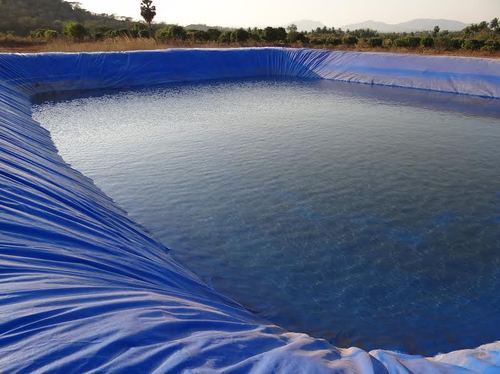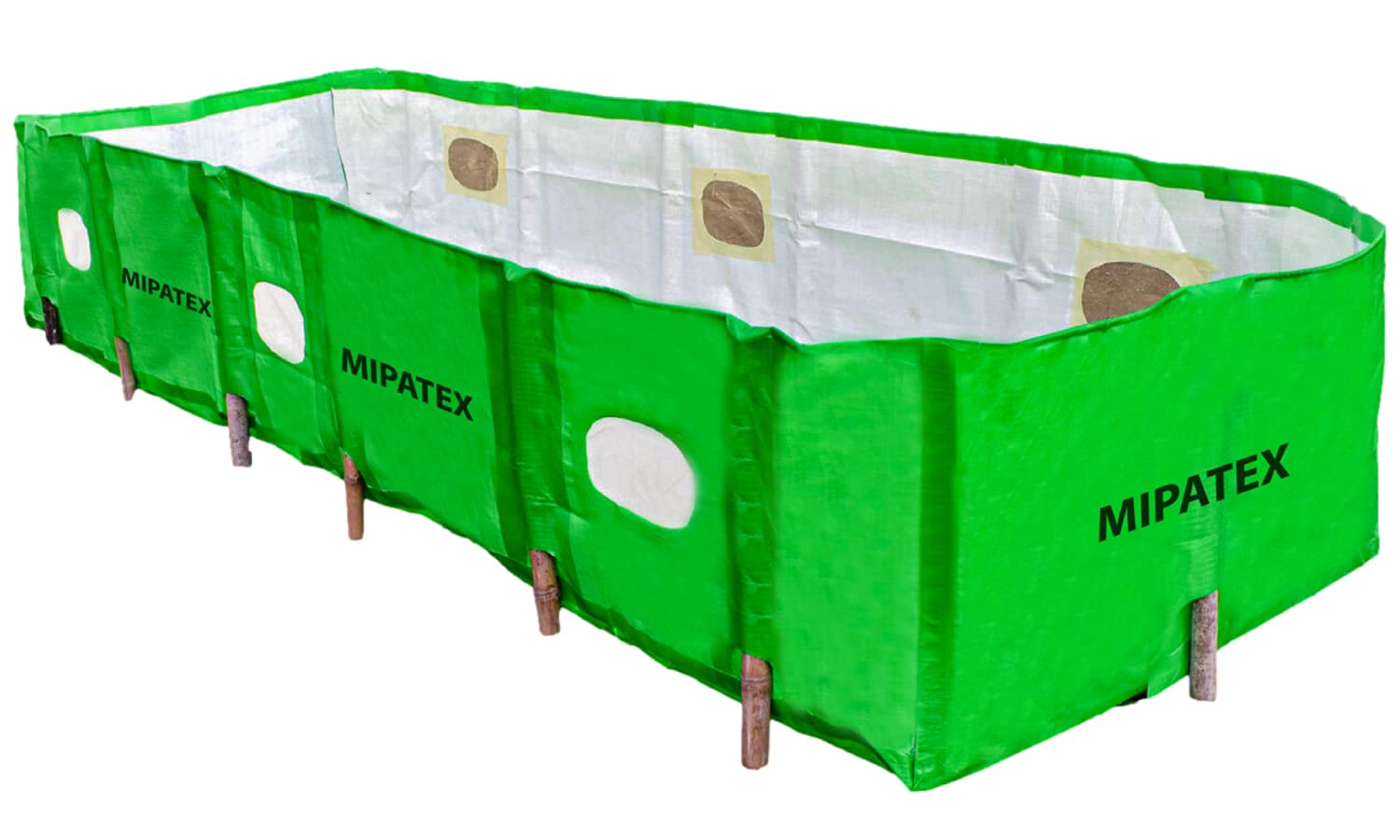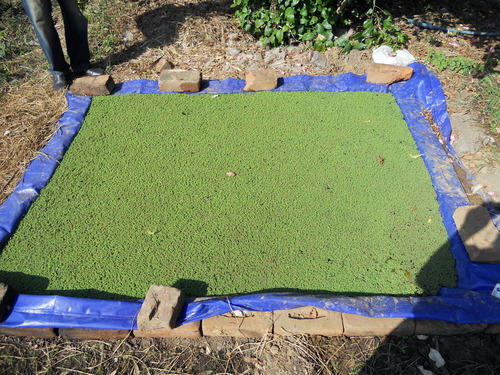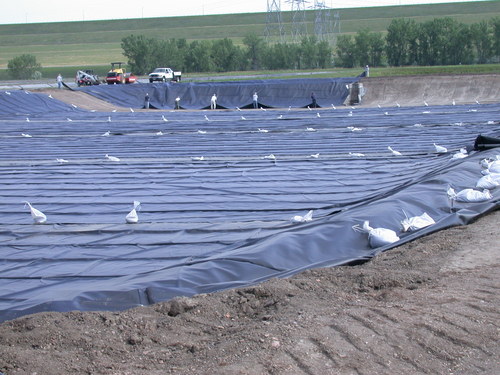Plasticulture products refer to a range of products made from plastic materials that are used in agriculture and horticulture. These products are used to enhance crop growth, improve crop yields, and reduce labor costs. Plasticulture products offer several benefits to farmers and horticulturists, such as reduced water usage, improved crop yields, and reduced labor costs. Additionally, plasticulture products are lightweight, durable, and easy to handle, and they can be used for a wide range of crops and growing conditions. Plasticulture products are becoming increasingly popular among farmers and horticulturists, as they offer a range of benefits and are cost-effective, durable and help to reduce the labor costs and increase efficiency.
All Products:
a) Poultry Curtains

- A poultry curtain, also known as a poultry curtain or side-wall curtain, is a type of curtain or tarp that is used in poultry farming to regulate the temperature and ventilation within a poultry house. These curtains are typically made of a durable, UV-resistant material and are hung on the sides of the poultry house.
- The main purpose of poultry curtains is to control the temperature and ventilation within the poultry house, which can have a significant impact on the health and productivity of the birds. The curtains can be opened or closed to adjust the amount of air flow and natural light entering the house, which can help to maintain a comfortable temperature and prevent the buildup of harmful gases.
- Poultry curtains also play a role in protecting birds from extreme weather conditions such as heat, cold, wind and rain. They can also act as a pest barrier, preventing birds from being attacked by predators or insects.
- In addition to temperature and ventilation control, poultry curtains can also be used to control the amount of light that reaches the birds. This can be important for the health and productivity of the birds, as too much or too little light can affect their growth and reproductive cycles.
- Overall, poultry curtains are an essential component of poultry farming, as they play a critical role in maintaining the health and productivity of the birds, and can help to improve the overall efficiency and profitability of the operation.
Buying Information
- Address 220, Azad Market Rd, New Delhi, Delhi 110006
- Phone Number +91 9811985459
b) Pond Liners

Pond liners are an essential part of building and maintaining a pond, as they help to prevent water loss and keep the pond water clean and healthy. Some of the key uses of pond liners include:
1. Water retention: Pond liners are used to retain water in a pond by preventing it from seeping into the ground. This helps to keep the water level in the pond stable and maintain the health of aquatic plants and animals.
2. Water quality: Pond liners help to keep the water in a pond clean and healthy by preventing sediment, debris, and other contaminants from entering the pond. This can help to reduce the need for regular water changes and improve the overall health of the pond ecosystem.
3. Flexibility: Pond liners can be used to create different types of pond, from small garden ponds to large commercial ponds, and can be adapted to suit the specific requirements of the pond.
4. Durability: Pond liners are made of durable materials such as PVC or HDPE, which are resistant to UV rays and puncture, making them long-lasting.
5. Easy to install: Pond liners are relatively easy to install, and they can be shaped and cut to fit the contours of the pond.
6. Landscaping: Pond liners can be used to create beautiful and functional garden ponds and water features, which can add aesthetic appeal and value to a property.
Overall, pond liners are a versatile and essential component of pond construction, and they can help to create and maintain healthy, attractive and functional pond ecosystem.
Buying Information
- Address 220, Azad Market Rd, New Delhi, Delhi 110006
- Phone Number +91 9811985459
c)Geomembrane Fabric

Geomembrane fabrics are a type of waterproof and impermeable membrane that are used in a variety of applications, including construction, mining, and waste management. They are typically made from a variety of materials such as polyethylene, polypropylene, or PVC.
Some of the characteristics and properties of geomembrane fabrics are:
1. Waterproof and impermeable: Geomembrane fabrics are used to prevent the ingress of water and other liquids, making them ideal for use in applications such as ponds, landfills, and waste management facilities.
2. Durable and long-lasting: Geomembrane fabrics are made from strong and durable materials that can withstand exposure to the elements and heavy loads.
3. Flexible and easy to install: Geomembrane fabrics are flexible, making them easy to install and shape to fit different applications.
4. UV resistant: Geomembrane fabrics are usually UV resistant and can withstand exposure to the sun, so they are suitable for use in outdoor applications.
5. Chemical resistance: Geomembrane fabrics are resistant to many chemicals, so they are suitable for use in applications where chemical exposure is a concern.
6. Customizable: Geomembrane fabrics can be customized to suit specific needs, such as different thicknesses, widths, and lengths.
Geomembrane fabrics are used in a wide range of applications, including:
● Construction: Geomembrane fabrics are used as a waterproofing layer in foundations, basements, and retaining walls.
● Mining: Geomembrane fabrics are used as a lining for tailings ponds and heap leach pads, to prevent the release of liquids and contaminants.
● Waste management: Geomembrane fabrics are used as a lining for landfills, waste management facilities, and other sites where hazardous materials are stored.
● Water management: Geomembrane fabrics are used as a lining for ponds, reservoirs, and other water management facilities.
● Agriculture: Geomembrane fabrics are used as a lining for irrigation ponds, tanks, and canals, to prevent water loss and improve crop yields.
Geomembrane fabrics are a versatile and essential materials for a wide range of industrial and environmental applications because of their properties such as being waterproof, durable, UV resistant, chemical resistance, customizable and easy to install.
Buying Information
- Address 220, Azad Market Rd, New Delhi, Delhi 110006
- Phone Number +91 9811985459
d)Vermi Beds

Vermi beds, also known as vermicomposting beds or worm beds, are systems that use worms, typically red worms, to break down organic waste into a nutrient-rich compost. Vermi beds are considered important for several reasons:
1. Sustainable waste management: Vermi beds can be used to process large quantities of organic waste, such as food scraps, yard waste, and even sewage, in a sustainable and environmentally friendly way. This can help reduce the amount of waste that ends up in landfills, where it can generate harmful methane gas.
2. Soil improvement: The compost produced by vermi beds is rich in nutrients, including nitrogen, phosphorus, and potassium, which are essential for plant growth. It can be used to improve the fertility and health of soil, leading to better crop yields and healthier plants.
3. Organic fertilizer: Vermi-compost is a natural, organic fertilizer that can be used to improve soil fertility, enhance plant growth, and reduce the need for synthetic fertilizers.
4. Reduce greenhouse gases: Vermi-composting not only reduces the volume of organic waste sent to landfills, but also helps to reduce the emissions of greenhouse gases, by breaking down the organic matter in a controlled environment.
5. Cost-effective: Vermi-composting is a low-cost and low-tech method of recycling organic waste, and it does not require expensive equipment, electricity or skilled labour.
6. Educational and Community building: Vermi-composting can be a fun and educational activity for families and communities. It can promote awareness about the importance of sustainable waste management and the benefits of organic gardening.
Overall, vermi beds are an important tool for sustainable waste management, soil improvement, and reducing greenhouse gases. They can be used in various scales from small gardens to large scale operations, and can bring multiple benefits to the environment and communities.
Buying Information
- Address 220, Azad Market Rd, New Delhi, Delhi 110006
- Phone Number +91 9811985459
e)Azolla Beds

Azolla beds are systems that use the aquatic fern Azolla as a source of organic matter and nutrient for plants. Azolla beds are considered important for several reasons:
1. Nitrogen fixation: Azolla is a nitrogen-fixing plant, meaning it can take nitrogen from the air and convert it into a form that plants can use. This can help to improve soil fertility and increase crop yields.
2. Organic matter: Azolla can be used as a source of organic matter for the soil, which can help to improve soil structure and water-holding capacity.
3. Livestock feed: Azolla can be used as a protein-rich feed for livestock, such as pigs, ducks, and fish.
4. Pest control: Azolla has been known to suppress the growth of certain weeds and pests, which can help to reduce the need for chemical pesticides and herbicides.
5. Carbon sequestration: Azolla has the ability to sequester carbon and may play a role in mitigating the impacts of climate change.
6. Water management: Azolla can be used to remove excess nutrients from water bodies, reducing eutrophication, and improving water quality.
7. Low cost and low-tech: Azolla can be grown in low-cost, low-tech systems such as ponds, ditches, and canals.s
Overall, Azolla beds are an important tool for soil improvement, pest control, water management, and livestock feeding. They are a low-cost, low-tech and sustainable method that can provide multiple benefits to the environment, agriculture and communities.
Buying Information
- Address 220, Azad Market Rd, New Delhi, Delhi 110006
- Phone Number +91 9811985459
f)Grow Bags

HDPE (high-density polyethylene) grow bags are a type of container used for growing plants. They are made from a durable and UV-stabilized HDPE material and are designed to be used in place of traditional pots or other containers.
Some of the benefits of using HDPE grow bags include:
1. Lightweight and easy to move: HDPE grow bags are lightweight and easy to move around, making them ideal for use in small spaces or in greenhouses.
2. Good drainage and aeration: HDPE grow bags have good drainage and aeration properties, which helps to promote healthy root growth and prevent waterlogging.
3. Reusable: HDPE grow bags are reusable, which makes them a cost-effective and environmentally friendly option for growing plants.
4. Customizable size: HDPE grow bags come in different sizes and can be customized to suit specific needs.
5. Easy to handle: HDPE grow bags are easy to handle and can be folded or rolled up for storage.
6. UV Stabilized: HDPE grow bags are UV stabilized which makes them suitable for use in outdoor applications.
HDPE grow bags are typically used for growing a variety of plants, such as vegetables, fruits, flowers, and herbs. They are also used in commercial agriculture and horticulture, as well as in home gardening. They are often used for growing plants in places where traditional pots or other containers are not practical, such as in greenhouses, small spaces, or in areas with limited soil.HDPE grow bags are a popular choice for container gardening due to their durability, easy to handle, UV stabilization, customizable size and good drainage and aeration properties, which help to promote healthy root growth and prevent waterlogging. They are also reusable, which makes them environmentally friendly and cost-effective.
Buying Information
- Address 220, Azad Market Rd, New Delhi, Delhi 110006
- Phone Number +91 9811985459
g)Weed Mats

Weed mat, also known as landscape fabric or weed barrier, is a type of barrier that is used to prevent the growth of weeds in gardens, flower beds, and other landscaped areas. The mat is typically made of a durable, non-biodegradable material, such as polyethylene or polypropylene, and is designed to be placed on top of the soil to block light and prevent the growth of weeds. This can be helpful in many ways like:
1. It helps to reduce the need for chemical herbicides, which can be harmful to the environment and human health.
2. It helps to improve the appearance of gardens, flower beds, and other landscaped areas by preventing the growth of unsightly weeds.
3. It helps to improve the health of plants by preventing competition for nutrients and water from weeds.
4. It helps to reduce labor costs associated with maintaining gardens, flower beds, and other landscaped areas by reducing the need for regular weeding.
5. It helps to prevent erosion and soil loss by holding the soil in place and reducing runoff.
Overall, weed mat is a useful tool for gardeners and landscapers, as it can help to improve the appearance, health, and maintenance of gardens and other landscaped areas.
Buying Information
- Address 220, Azad Market Rd, New Delhi, Delhi 110006
- Phone Number +91 9811985459
h)Mulch Films

Mulch film, also known as agricultural plastic or ag film, is a type of plastic sheeting that is used in agriculture to cover the soil surface around plants. Mulch film is used to improve crop yields and reduce labor costs by suppressing weeds, conserving moisture, and regulating temperature.
Some of the key characteristics and benefits of mulch film include:
1. Weed suppression: Mulch film is used to suppress weeds by creating a barrier between the soil and the air, preventing light from reaching the weed seeds and preventing them from germinating.
2. Moisture conservation: Mulch film helps to conserve moisture by slowing evaporation and reducing the need for frequent irrigation.
3. Temperature regulation: Mulch film helps to regulate temperature by providing insulation and keeping the soil warmer during cool periods.
4. Durable: Mulch film is made from durable materials such as polyethylene, which can withstand exposure to the elements and heavy loads.
5. UV resistant: Mulch film is usually UV resistant, which makes it suitable for use in outdoor applications.
6. Customizable: Mulch film can be customized to suit specific needs, such as different thicknesses, widths, and lengths.
Mulch films are commonly used for growing crops such as vegetables, fruits, flowers, and herbs. The films are also used in commercial agriculture and horticulture. They are often used for growing plants in places where traditional pots or other containers are not practical, such as in greenhouses, small spaces, or in areas with limited soil. Mulch films also have the ability to reflect sunlight, which helps to increase the growth rate of plants. Mulch films are a popular choice among farmers and gardeners because they can help to improve crop yields and reduce labor costs by suppressing weeds, conserving moisture, and regulating temperature. Mulch films are also durable, UV resistant and customizable.
Buying Information
- Address 220, Azad Market Rd, New Delhi, Delhi 110006
- Phone Number +91 9811985459
i)Biofloc Fish Farming Beds

Biofloc fish farming beds, also known as biofloc systems, are a type of aquaculture system that uses microorganisms to create a balanced ecosystem in fish ponds or tanks. In this system, fish waste and other organic matter serve as food for the microorganisms, which in turn create a natural environment that supports the growth and health of the fish. Some of the key characteristics and benefits of biofloc fish farming beds include:
1. High density: Biofloc systems allow for high fish stocking densities, which can increase production and profits for farmers.
2. Water conservation: Biofloc systems use minimal water and can recycle up to 90% of the water, which makes them suitable for use in areas with water scarcity
3. Reduced use of chemicals: In biofloc systems, the balance of the ecosystem is maintained by the microorganisms, which reduces the need for chemical treatments.
4. Low oxygen requirement: Biofloc systems require less oxygen than traditional aquaculture systems, which makes them suitable for use in areas with poor oxygenation.
5. Increased growth rate: Biofloc systems can increase the growth rate of fish by providing a balanced ecosystem that supports their health and well-being.
6. Nutrient recycling: Fish waste and other organic matter are used as food for microorganisms in biofloc systems, which allows for efficient recycling of nutrients.
Biofloc fish farming beds are used to raise fish and other aquatic species in a controlled environment. They are particularly popular in the cultivation of tilapia, catfish, and other freshwater species. The system is also used to cultivate shrimps, prawns and other marine species. They have been proven to be efficient and cost-effective in terms of water use, nutrient recycling, and fish health and growth. They are also suitable for use in areas with water scarcity, poor oxygenation and can be used in both indoor and outdoor settings.
Buying Information
- Address 220, Azad Market Rd, New Delhi, Delhi 110006
- Phone Number +91 9811985459
j)Polyhouse Fabric/ GreenHouse Fabric
.jpg)
A polyhouse is a type of greenhouse that is made from polyethylene or polycarbonate fabric. This type of greenhouse is designed to protect crops from the elements, such as cold weather, heavy winds, and pests.
Some of the key characteristics and benefits of polyhouse fabric include:
1. Light transmission: Polyhouse fabric is designed to allow light to pass through, which helps to support the growth and health of crops.
2. UV protection: Polyhouse fabric is typically UV-stabilized, which helps to protect crops from the harmful effects of the sun.
3. Durable: Polyhouse fabric is made from durable materials, such as polyethylene or polycarbonate, which can withstand exposure to the elements and heavy loads.
4. Flexible: Polyhouse fabric can be easily manipulated and shaped to fit the desired shape and size of the greenhouse.
5. Cost-effective: Polyhouse fabrics are relatively inexpensive to produce and maintain, making them a cost-effective option for farmers and gardeners.
6. Temperature regulation: Polyhouse fabric helps to regulate the temperature inside the greenhouse by trapping heat and protecting crops from the cold.
Polyhouse fabric is used to protect crops from the elements and provide them with a controlled environment that supports their growth and health. They are commonly used for growing crops such as vegetables, fruits, flowers, and herbs. It is particularly useful for farmers and gardeners who want to extend their growing season or grow crops in areas with harsh weather conditions. Polyhouse fabrics are also used in commercial agriculture and horticulture. They are often used for growing plants in places where traditional pots or other containers are not practical, such as in greenhouses, small spaces, or in areas with limited soil.
Buying Information
- Address 220, Azad Market Rd, New Delhi, Delhi 110006
- Phone Number +91 9811985459
k)Polyhouse Fabric/ GreenHouse Fabric

Cow mats, also known as cattle mats or stable mats, are mats made of rubber or other durable materials that are placed on the floor of a cow barn or stable. They are designed to provide a comfortable, cushioned surface for cows to stand and lie on, and to help protect the cows from the cold, hard concrete floors of the barn.
Some of the key characteristics and benefits of cow mats include:
1. Comfort: Cow mats provide a cushioned surface for cows to stand and lie on, which helps to prevent injuries and improve their overall comfort.
2. Durability: Cow mats are typically made from durable materials, such as rubber, which can withstand heavy loads and exposure to the elements.
3. Insulation: Cow mats can help to insulate cows from the cold concrete floors of the barn, which helps to keep them warm and comfortable.
4. Easy to clean: Cow mats can be easily cleaned with a hose or pressure washer, which helps to maintain a clean and hygienic environment for the cows.
5. Slip-resistant: Cow mats typically have a slip-resistant surface, which helps to prevent cows from slipping and falling on the barn floor.
6. Cost-effective: Cow mats are relatively inexpensive to produce and maintain, making them a cost-effective option for farmers and ranchers.
Cow mats are typically used in cow barns, stables, and other livestock facilities to provide a comfortable and safe surface for cows to stand and lie on. They are also useful for farmers who want to keep the barn or stable clean and hygienic, and protect cows from the cold concrete floor. They are commonly used in dairy farms, beef farms and other livestock operations. They are also used in animal shelters and zoos to provide a comfortable and safe environment for animals.
Buying Information
- Address 220, Azad Market Rd, New Delhi, Delhi 110006
- Phone Number +91 9811985459
